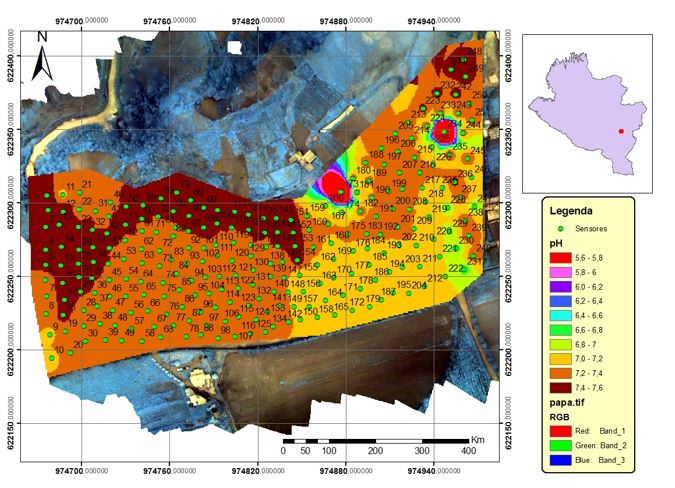Mapeamento da variabilidade do solo e possíveis impactos sobre a cultura da batata (Solanum tuberosum)
DOI:
https://doi.org/10.52755/sas.v2i2.121Palabras clave:
insumos, sensores, pragas , doenças, monoculturaResumen
A batata é um alimento básico na dieta diária da população colombiana e latino-americana. No Departamento de Nariño sua produção é massiva, sendo um produto agrícola muito importante e base da segurança alimentar na Colômbia. Pelo fato de ser cultivada extensivamente como monocultura, tornou-se a cultura com maior incidência de pragas e doenças na região. Assim se justifica a urgência e a importância desta metodologia que propõe soluções na implementação de tecnologias e dispositivos como drones e sensores de diferentes tipos que ajudam a determinar variáveis "‹"‹que influenciam a incidência destas pragas, e que reduzem as perdas tanto na produção como na qualidade do produto. Assim, este estudo realizado no distrito de Obonuco, teve como objetivo analisar algumas variáveis "‹"‹simples da cultura da batata. Observou-se valores médios de temperatura de 15,7 oC, um intervalo de pH de 7,3, uma condutividade média muito baixa de 0,07 μS/m, umidade relativa do ar de 57,18%. Por meio do mapeamento dessas variáveis "‹"‹foram gerados diversos segmentos que podem ser facilmente compreendidos pelo produtor, gerando recomendações para a tomada de decisões no controle de pragas, doenças e no combate í má formação de tubérculos, principalmente no segmento onde observou-se maior umidade, pois ao manter essa variável moderada, é garantido um bom controle de pragas, além de evitar o apodrecimento da cultura da batata, o que é muito incidente na área de estudo.
Descargas

Descargas
Publicado
Cómo citar
Número
Sección
Licencia
Derechos de autor 2021 DIEGO JAVIER PEREZ ORTEGA, JORGE ANDRES SEGOVIA ORTEGA, FABIO ANDRES BOLAÑOS , EDGAR DARIO OBANDO , ALEXANDRE MARCO DA SILVA

Esta obra está bajo una licencia internacional Creative Commons Atribución-NoComercial-CompartirIgual 4.0.
Autores concordam com os seguintes termos:
a) Os autores mantêm os direitos autorais e concedem à revista o direito de primeira publicação, com o trabalho simultaneamente licenciado sob a LicençaAttribution-NonCommercial-ShareAlike 4.0 International, que permite o compartilhamento do trabalho com reconhecimento da autoria e publicação inicial na Revista SAS. A licença permite o uso, a distribuição e a reprodução irrestrita, em qualquer meio, desde que devidamente citada a fonte. Essa licença permite também que outros remixem, adaptem e criem a partir do seu trabalho para fins não comerciais, desde que atribuam a você o devido crédito e que licenciem as novas criações sob termos idênticos.
b) Não cabe aos autores compensação financeira a qualquer título, por artigos ou resenhas publicados na South American Sciences.
c) Os conceitos expressos nos artigos publicados na South American Sciences são de inteira responsabilidade de seus autores.








